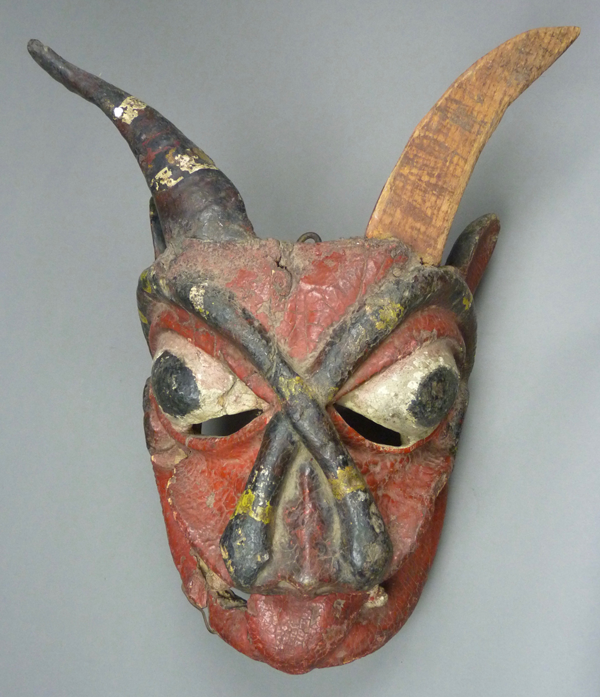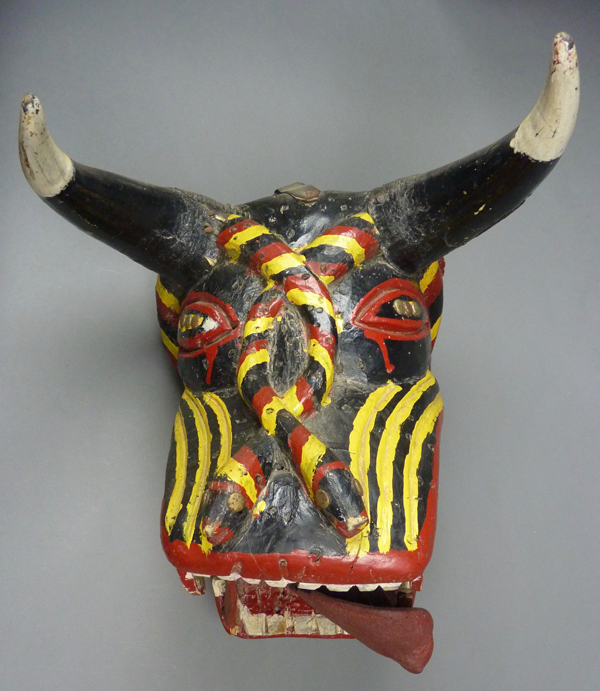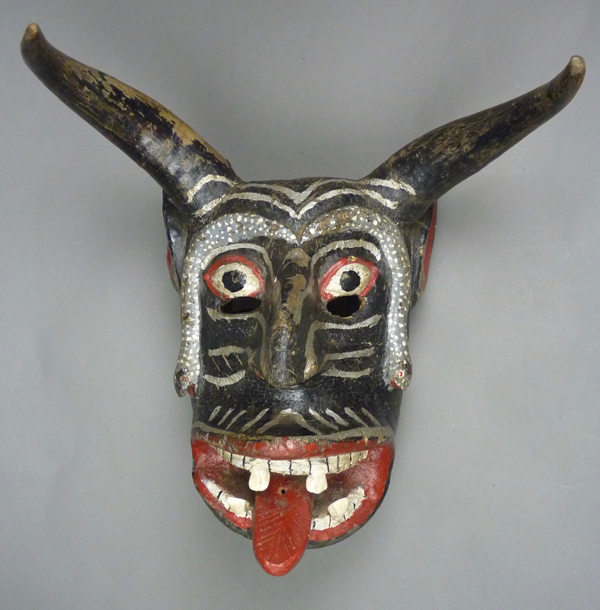This week we will examine several more older masks from the Mexican state of Michoacán. These three are all from Tarascan Indian towns.
Such impressive older Diablo masks are not so easy to find, and a year went by between the time I bought the first one and then the second. I had never realized until I sat down to write this post that, although the first appears to be older than the second, they are by the same carver. I will begin with one that I bought from Jaled Muyaes and Estela Ogazón in July, 1997. I wrote down that Emiliano Fernández was the carver and neglected to note the name of his town. Then when I saw how obvious it was that he had also carved the second mask, I finally learned the name of the town—Angahuan, in the Municipio of Uruapan.
Angahuan is a short distance from a nearby smouldering volcano, Paracutín.
https://www.lonelyplanet.com/mexico/angahuan/attractions/volcan-paricutin/a/poi-sig/1467715/361675
Here is this old and wonderful Diablo carved by Emiliano Fernández. I have no information about its age but I believe that it dates to 1960 or earlier. It could easily be much older than that. The wooden horn is an obvious replacement. I call your attention to the delicate and artful carving, for example that of the eyes and vision openings. This is the work of a great master, but he worked at a time when such artists had only limited exposure to the larger world.

In this example the two snakes are crossed rather than intertwined. Note that one can see carved eyes on the snake to the viewer’s left.
Continue Reading →




